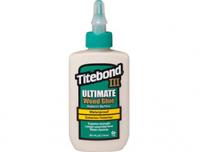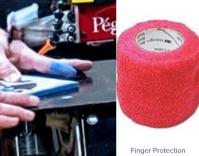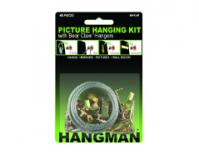Bagatelle Board Game Downloadable Plan
Bagatelle Board Game Downloadable Plan
| The original Children's Bagatelle game shown here, was made by my Grandfather some 80 years ago. Like my Mother and Uncles did back then, my Great Niece plays with this old game at the cottage, every time she visits. This is the game that inspired me to design the Pinball game in 1990, but since Children's Bagatelle is timeless, I made this one for my Great Niece for Christmas, and pass the plans on to you. All dimensions are the same, but I added a few new features. The original game must have had an angled block underneath, due to the fade mark and nail holes. This would have raised the top off the table to give the board the correct slope. Since I wanted to have the new game hung on the wall, it has legs at the top corners that fit flush into the back. I also added a groove for the balls to rest in, when hung on the wall. The original games had a cue for pushing the balls. I'm not sure if our original game had a cue, but I designed one for these plans, that works well. It also fits snug into the ball channel, holding them in place while hung on the wall. If you click on the Online Guide To Traditional Games, at the bottom of this page, it will give more history on Bagatelle. A great, simple game for children, as it requires no skill. The ball bearings really bounce off the brass nails, and make a pleasant "ping" sound. Pure luck will get the highest scores Plans include parts list and sizes, complete measured drawings for construction, and measurement charts for nails and holes. You will need a table saw, mitre saw or box, frame clamp, sabre saw or band saw, and drill. Dimensions:16 1/4"W x 31"L x 1 1/4"H (41.27cm x 78.74cm x 3.18cm) |
NOTE: The instructions will print to letter size paper. The link to download your woodworking plans will be in your emailed receipt after making your purchase.
| As can be seen in this 1886 picture from the Billiard Archive (Pittsburgh, Pa.), smaller table-top versions of bagatelle were produced in the late 19th century. To increase the challange for the player on this smaller table, nails were added as barriers around the target holes. Then, instead of sticks to propel the balls (also reduced in size), a spring loaded plunger was added. Table-top bagatelle games of this type became popular children's games. Eventually these table top games evolved, and with the addition of mechanical devices (and legs) by the 1920s, became the modern Pinball Machine. (from The Museum & Archive Of Games, University of Waterloo, Ontario, Canada) |
|
The Online Guide to Traditional Games
The downloadable instructions are in Adobe Acrobat  .
.
For your FREE download, click 
If this plan is made up of more than one PDF file they have been combined into a ZIP file that you can unzip once you have downloaded the file to your computer.
Please note this plan is only available as a Adobe PDF download for your personal use.
Download your scroll saw patterns right away! Click the link on the Thank You Page after your purchase completes, or Click the Name of the Scroll Saw Pattern in your Receipt email from Bear Woods Supply.

Bagatelle Board Game Downloadable Plan
| The original Children's Bagatelle game shown here, was made by my Grandfather some 80 years ago. Like my Mother and Uncles did back then, my Great Niece plays with this old game at the cottage, every time she visits. This is the game that inspired me to design the Pinball game in 1990, but since Children's Bagatelle is timeless, I made this one for my Great Niece for Christmas, and pass the plans on to you. All dimensions are the same, but I added a few new features. The original game must have had an angled block underneath, due to the fade mark and nail holes. This would have raised the top off the table to give the board the correct slope. Since I wanted to have the new game hung on the wall, it has legs at the top corners that fit flush into the back. I also added a groove for the balls to rest in, when hung on the wall. The original games had a cue for pushing the balls. I'm not sure if our original game had a cue, but I designed one for these plans, that works well. It also fits snug into the ball channel, holding them in place while hung on the wall. If you click on the Online Guide To Traditional Games, at the bottom of this page, it will give more history on Bagatelle. A great, simple game for children, as it requires no skill. The ball bearings really bounce off the brass nails, and make a pleasant "ping" sound. Pure luck will get the highest scores Plans include parts list and sizes, complete measured drawings for construction, and measurement charts for nails and holes. You will need a table saw, mitre saw or box, frame clamp, sabre saw or band saw, and drill. Dimensions:16 1/4"W x 31"L x 1 1/4"H (41.27cm x 78.74cm x 3.18cm) |
NOTE: The instructions will print to letter size paper. The link to download your woodworking plans will be in your emailed receipt after making your purchase.
| As can be seen in this 1886 picture from the Billiard Archive (Pittsburgh, Pa.), smaller table-top versions of bagatelle were produced in the late 19th century. To increase the challange for the player on this smaller table, nails were added as barriers around the target holes. Then, instead of sticks to propel the balls (also reduced in size), a spring loaded plunger was added. Table-top bagatelle games of this type became popular children's games. Eventually these table top games evolved, and with the addition of mechanical devices (and legs) by the 1920s, became the modern Pinball Machine. (from The Museum & Archive Of Games, University of Waterloo, Ontario, Canada) |
|
The Online Guide to Traditional Games
The downloadable instructions are in Adobe Acrobat  .
.
For your FREE download, click 
If this plan is made up of more than one PDF file they have been combined into a ZIP file that you can unzip once you have downloaded the file to your computer.
Please note this plan is only available as a Adobe PDF download for your personal use.
Download your scroll saw patterns right away! Click the link on the Thank You Page after your purchase completes, or Click the Name of the Scroll Saw Pattern in your Receipt email from Bear Woods Supply.
























 Add to Cart
Add to Cart












 Cart
Cart